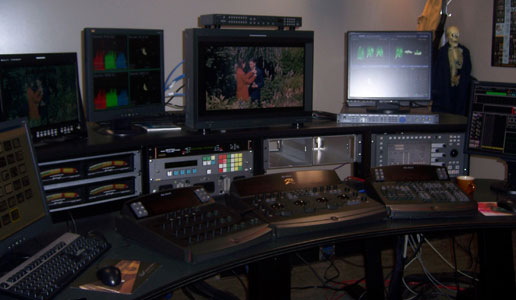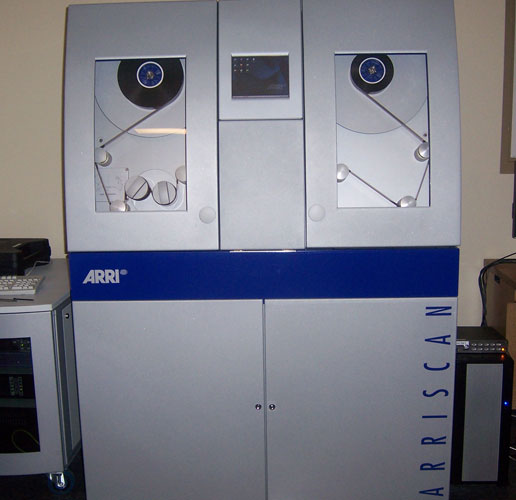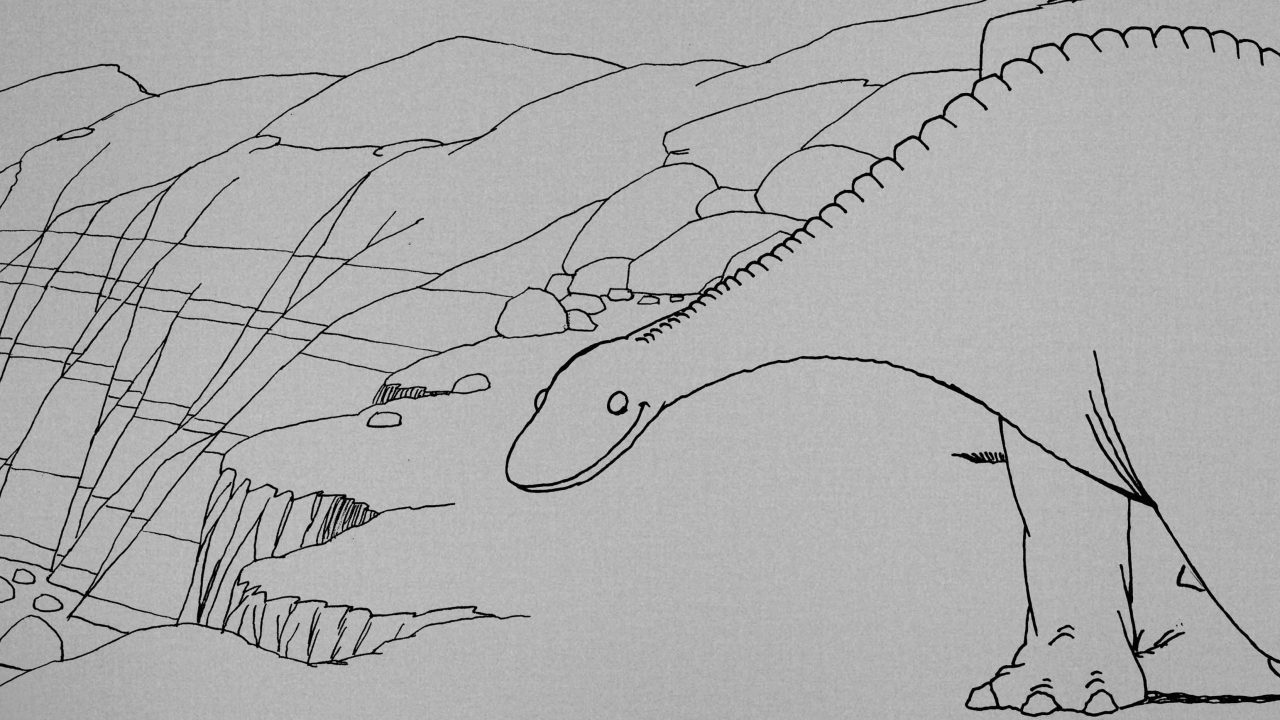Inside the Vault Part 2: How the NFB restores and digitizes its collection
***
So now that we all know how the NFB’s collection is preserved, it’s time to move on to how we restore and digitize our films.
To be clear from the get-go, the NFB does very little in regard to film restoration. When you think about it, with the size of our collection we could spend the next 100 years restoring our stock. So we try to limit ourselves to minor restoration – correcting major scratches and doing colour correction (ensuring every shot has a scene by scene calibration of colour). On some specific titles, we restore some of the sound. It’s all a matter of priority, though, for the reason I mentioned above.
We do our restoration work on a Datacine, which is like a telecine but it produces data (which reminds me of the old joke, “There are 10 types of people in this world: Those who understand binary code, and those who don’t). The Datacine works on two signals – data and video. When we deal with a video signal, it’s usually for a final master and when we deal with data, it means that eventually it’s going to be colour corrected on another colour station.
Deep breath here, I’m about to get really technical:
The great thing about the Datacine is that it can handle all kinds of video format. From the master you’re working with, you can go back to 525 lines, you can do HD, you can do PAL. The main thing is that you can go from one system to another using the same list of scene by scene corrections. You don’t have to start from scratch each time. It also allows you to change formats – like from pillar box to letter box to full screen – and adjust to compensate for the differences using the same system.
We also use the Datacine to digitize our collection. At the moment, however, it’s not true digitization because we’re storing the end product on tape, just in digital format. These tapes should be good for about 10 – 15 years. Technically we can use the Datacine for pure digitization, but to date we haven’t been. We have, however, just acquired an Arriscan, which seems to have all the people in Richard Cournoyer’s department very excited.
Ideally, our plan is to scan the entire collection and then truly digitize the films picture by picture. To do this, we would start from scratch for every production. Whenever we do a transfer, we always use the best source material we can, whether that comes from our vaults or from our material that is being stored off-site. It’s time consuming because for every project we must evaluate every interpositive, internegative and print, but in the end it enables us to use the very best material to reconstruct a film.
Both the Datacine and the Arriscan are Hi-Def machines. We can go up to 6K, but the memory that would require is problematic. To that end, we’ll probably aim for 4K. This issue is currently being debated. In addition, we’ll probably combine the work we’re doing on the Datacine with the Arriscan.
The order in which we digitize our films is based on priority. At the time I met with Richard, he had over 150 requests sitting on his desk. All urgent, I’m sure. For the Screening Room, our collection experts (Marc and Albert) submit a list of films for each stage of programming (roughly 3 month chunks) to the rights department. Once the rights are cleared, the list makes it way to digitization. Other requests (for other clients, etc.) are treated on a case by case basis.
So that’s all I’ve got on the preservation/restoration/digitization front. If there are any of you who are still hungry for more, let me know and I’ll dig even further.




The aim of this project is to open up the wealth of 20th century audio and visual material that has been stored in the archives of the parties concerned. If nothing is done about it, this material will be lost forever. In this project the material will be restored, preserved, digitalised and made available. A total of 137.200 hours of video, 22.501 hours of film, 123.900 hours of audio and 2,9 million photos is involved.
Julie, Thank you very much. I was fortunate enough to do a small editing contract with the NFB about a year ago. It was a very rewarding experience.
@Tyson – I’m looking into it for you.
Julie, It’s kind of difficult when you only see the programs / procedures listed in the job posting for the first time. I didn’t remember anything like that at Concordia. I know restoration is a highly specialized process, requiring lots of patience. Are there other private companies doing it in Montreal that you know of?
I saw a great piece about the restoration of HELP! on the Beatles DVD.
Hi, recently The NFB had an opening in this department. What kind of training is generally required to be qualified for this type of position? I have telecine experience in smaller formats of film.
@Tyson – I’m not sure. You’d have to check the requirements listed in the job description. They would have been included with the ad.
Some impressive machinery there. Not sure if it’s secret, but I’d be curious to know what a Datacine and an Arriscan are worth.
And are you storing your digital files or just deleting them after transferring to tape? Are they backed up on physically separate servers?
As well, do you just make one copy to tape or do you have multiples? This is all fascinating stuff and I’m hoping that you’re doing everythign necessary to preserve Canada’s important film history!
You’ve got the wrong its in your title (and your slug is too long by a a factor of five).